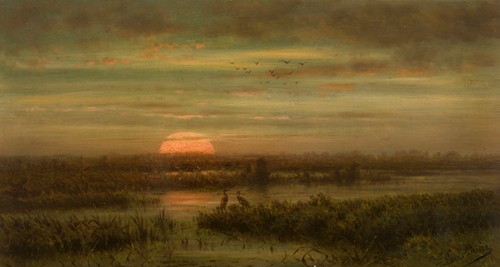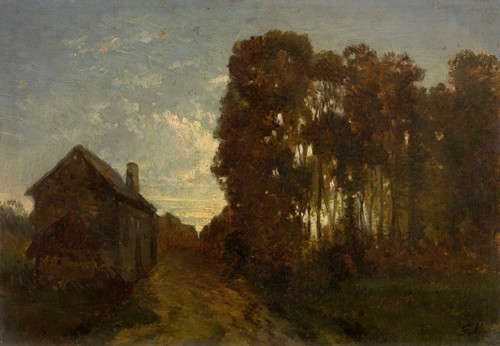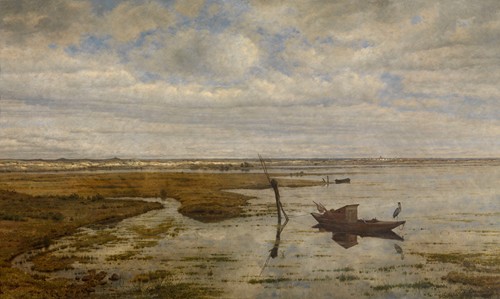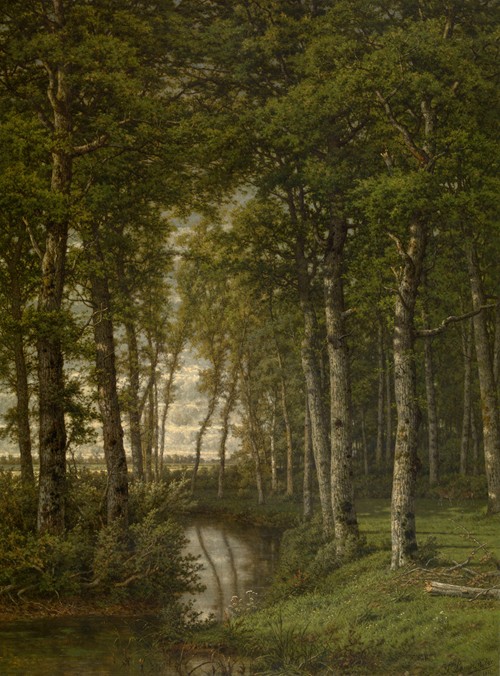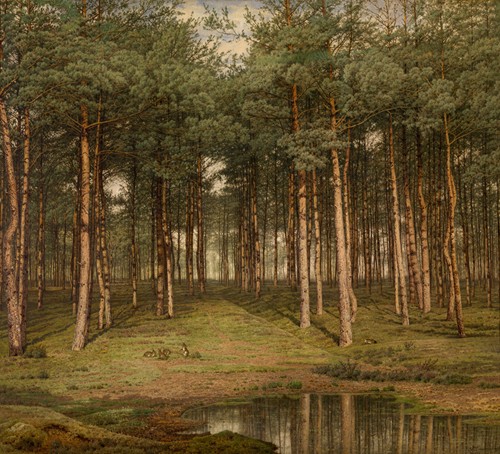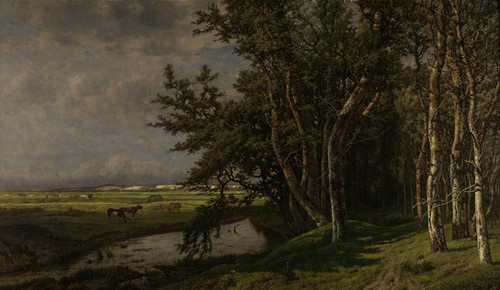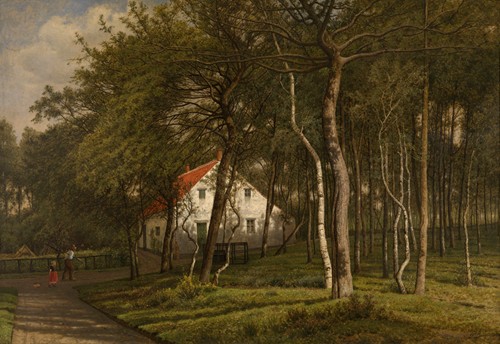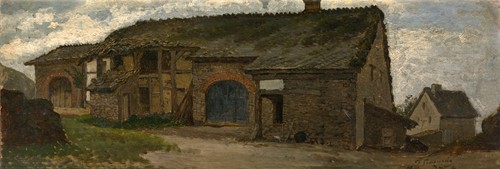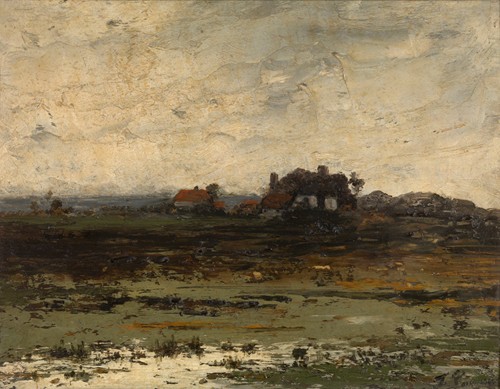
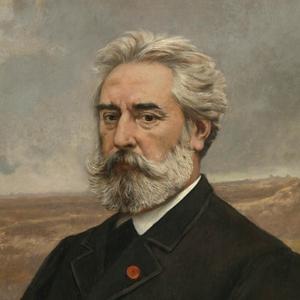
Jean Pierre François Lamorinière, Jan Pieter Frans Lamorinière or François Lamorinière was a Belgian landscape painter best known for his realistic depictions of landscapes in his home country. His work is situated between the previous generation of the Romantic landscape painters and the Realist landscape.
Jean Pierre François Lamorinière's birth name was Joannes Petrus Franciscus Lamorinière. He was the son of Ioannes Petrus Franciscus Lamorinière and Maria Scholastica. His father was a sergeant major of the artillery in Antwerp.
Lamorinière commenced his studies at the Antwerp Academy of Fine Arts with the sculptor Joseph Geefs but after a few weeks he started to study in the studio of Emmanuel Noterman, a painter and printmaker known for his genre scenes with animals. He also studied under the prominent marine painter Jacob Jacobs known for his scenes of southern ports and landscapes. Lamorinière started to practice outdoor painting in the immediate vicinity of Antwerp. He exhibited his first work, a Sunset (now in the Walker Art Gallery, Liverpool) in Antwerp in 1848. He is believed to have worked some time in Barbizon, where the painters of the Barbizon school Théodore Rousseau and Jean-François Millet had made their homes and worked. It is not clear when or how long he stayed there but one work dated to 1854 is called Effect of the morning on a forest in Barbizon.
From the mid 1850s the artist starts to gain success thanks to the support of the Brussels art dealer Gustave Couteaux. The future Leopold II of Belgium purchased one of his works through Couteaux. In 1860 he was granted the Order of Leopold, a Belgian national honorary order of knighthood. He came into contact with the London-based Belgian dealer Mr. Gambart. He later visited England and around 1865 several paintings of the forest of Burnham near London by his hand are recorded.
In 1866 Lamorinière married Henriette Lavaux of 24 years old who was of French origin. The artist also starts to travel to find new subjects in Les Fagnes (1867), the banks of the Meuse (1868-1869), Germany (1869) and from the early 1870s he spent annually several months on the island Walcheren in the Netherlands. He exhibited in Vienna, Prague, Paris, Rotterdam and Amsterdam and painted in these locations when he travelled there. He returned often to paint in the border town of Putte, Kapellen where in the mid 1870s he acquired a residence called The Pavillion.
Jean Pierre François Lamorinière was among a large number of Antwerp artists who established the Vereeniging der Antwerpsche etsers or l’Association des aquafortistes anversois ('Association of Antwerp Etchers') founded in 1880. The co-founders included Léon Abry, Constant Cap [de], Florent Crabeels, Edgard Farasyn, Egide François Leemans, Willem Linnig the Elder, Willem Linnig the Younger, Joseph Van Luppen [nl], Isidore Meyers [nl], Karel Ooms, Max Rooses, Hendrik Frans Schaefels, Lucas Victor Schaefels, Jan Stobbaerts, Frans Van Kuyck, Piet Verhaert, and Charles Verlat. The Vereeniging published an annual album containing graphic works of its members.
Lamorinière lost his eye sight in 1898 and ceased to paint. He died in Antwerp on 3 January 1911.
